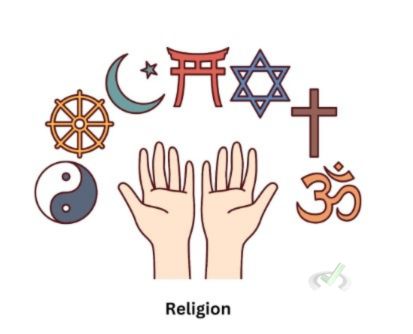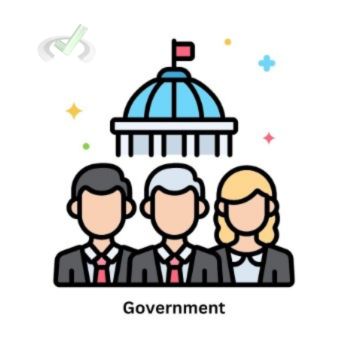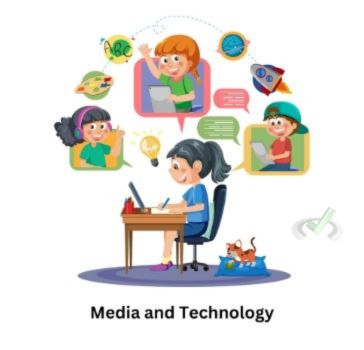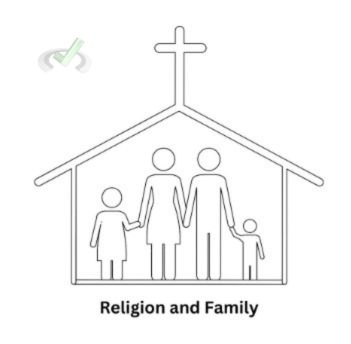Social institutions are the backbone of any society. They provide structure and organization, helping to maintain order and meet individuals' basic needs. Understanding these institutions is crucial for comprehending how societies function and interact.
I. What are Social Institutions?
Social institutions are established systems of norms and structures that shape and guide the behavior of individuals within a community. They provide a framework for social interactions and help regulate social life. These institutions ensure that societal needs are met in an organized manner.
II. Major Types of Social Institutions
There are several primary social institutions, each playing a significant role in society. Let’s explore them in detail:
A. Family
The family is the most fundamental social institution. It is the primary unit for socializing children and providing emotional support. Families can vary widely in structure, including nuclear, extended, and single-parent families.
Functions of the Family:
- Socialization: Families teach children cultural norms and values, such as manners, language, and social roles.
- Support: Families provide emotional, financial, and social support to their members, ensuring their well-being.
- Reproduction: Families are responsible for bearing and raising children, thus ensuring the continuity of society.

B. Education
Education is crucial for transmitting knowledge and skills necessary for individuals to function in society.
Functions of Education:
- Knowledge Transmission: Schools teach academic subjects, practical skills, and critical thinking.
- Social Integration: Education helps individuals integrate into society by teaching them societal norms and values.
- Social Mobility: Education can provide opportunities for economic advancement and career development.

C. Religion
Religion provides moral guidance, a sense of community, and answers to existential questions.
Functions of Religion:
- Moral Guidance: Religions offer ethical guidelines for behavior, helping individuals distinguish right from wrong.
- Community: Religious institutions foster a sense of belonging and community among their members.
- Rituals: Religions conduct rituals, such as weddings and funerals, reinforcing social bonds and cultural heritage.

D. Economy
The economy organizes the production, distribution, and consumption of goods and services, which are essential for meeting society's material needs.
Functions of the Economy:
- Production: The economy determines what goods and services are produced and in what quantities.
- Distribution: The economy decides how goods and services are distributed among the population.
- Consumption: The economy influences what people consume and how they use resources.

E. Government
The government provides structure and organization for society through laws and policies.
Functions of Government:
- Law Enforcement: Governments enforce laws to maintain order and protect citizens.
- Public Services: Governments provide essential services such as education, healthcare, and infrastructure.
- Protection: Governments protect citizens from external threats (e.g., military defense) and internal threats (e.g., policing).

F. Healthcare
Healthcare is a vital institution that focuses on maintaining and improving the health of individuals.
Functions of Healthcare:
- Medical Care: Healthcare institutions provide treatment and preventive care for illnesses and injuries.
- Health Education: Healthcare systems educate the public about health practices and disease prevention.
- Public Health: Healthcare institutions work to improve public health through policies, research, and community health initiatives.

G. Media and Technology
Media and technology are increasingly important in modern society, influencing communication, information dissemination, and social interactions.
Functions of Media and Technology:
- Information: Media disseminates information, news, and entertainment to the public.
- Communication: Technology facilitates communication through social media, email, and messaging apps.
- Influence: Media and technology shape public opinion, cultural trends, and social norms.

III. How Social Institutions Interact
Social institutions do not function in isolation. They interact and influence each other in many ways.
A. Family and Education
Families prepare children for education by instilling values and basic skills. Schools often reinforce these family-taught values and norms, creating a continuous socialization process.
B. Religion and Government
Religious beliefs can influence laws and government policies. For example, religious views can affect marriage, education, and morality legislation. Conversely, governments can regulate religious practices to ensure public order and safety.
C. Economy and Family
Economic conditions impact family stability and well-being. For instance, financial stress can affect family dynamics and relationships. Families, in turn, influence the economy through their roles as consumers and workers.

D. Education and Economy
Education is closely linked to economic opportunities. Higher education levels often lead to better job prospects and higher income. Conversely, economic conditions can impact access to quality education and resources.
E. Government and Economy
Government policies, such as tax laws and business regulations, shape economic conditions. These policies influence how businesses operate and how wealth is distributed among citizens.
F. Religion and Family
Religious institutions often influence family values and practices. For example, many religions have specific views on marriage, parenting, and family roles, which shape family structures and dynamics.

G. Healthcare and Government
Governments play a crucial role in providing and regulating healthcare services. Government agencies typically manage public health policies, healthcare funding, and health education programs.
IV. Bridge/Overlap
Understanding social institutions involves seeing how they overlap and influence each other. This interconnectedness extends to various areas relevant to MCAT topics.
A. Psychological Theories
Social institutions influence individual psychology and behavior. For example, family and educational environments shape cognitive development and social skills.
B. Health and Medicine
Social institutions like family and economy significantly impact health outcomes. Access to healthcare, social support systems, and economic stability are critical social determinants of health.
C. Cultural and Social Differences
Different societies have unique social institutions that affect global interactions and cultural exchanges. Understanding these differences is crucial for sociology, anthropology, and international relations.
D. Public Health and Policy
Social institutions influence public health, including government, healthcare, and education. Policies aimed at improving health outcomes often require coordinated efforts across these institutions.
V. Wrap-Up/Key Terms
Understanding social institutions helps explain how society functions and maintains order. Each institution plays a unique role but is interconnected with others, creating a complex web of social interactions.
Key Terms
- Social Institution: Established systems of norms and structures in society.
- Family: The primary unit for socializing children and providing support.
- Education: The institution for transmitting knowledge and skills.
- Religion: Provides moral guidance and a sense of community.
- Economy: Organizes producing, distributing, and consuming goods and services.
- Government: Provides structure and organization for society through laws and policies.
- Healthcare: Focuses on maintaining and improving health.
- Media and Technology: Influences communication, information dissemination, and social norms.
VI. Practice Questions
Sample Practice Question 1
Which social institution is primarily responsible for enforcing laws to maintain order?
A. Family
B. Education
C. Government
Ans. C
The government enforces laws to maintain order and provides public services.
Sample Practice Question 2
How do education and the economy interact?
A. They function independently.
B. Education influences economic opportunities, and economic conditions affect access to education.
C. They have no relationship.
Ans. B
Education can lead to better job opportunities, while economic conditions can impact the availability and quality of education.







 To help you achieve your goal MCAT score, we take turns hosting these
To help you achieve your goal MCAT score, we take turns hosting these 





















 reviews on TrustPilot
reviews on TrustPilot